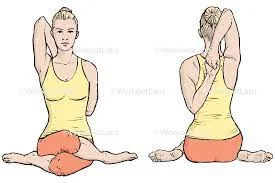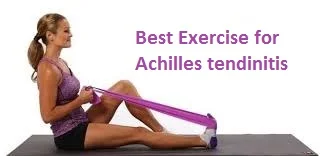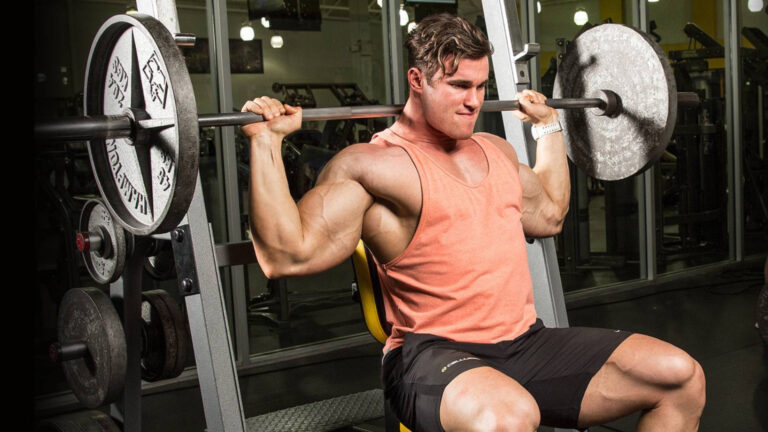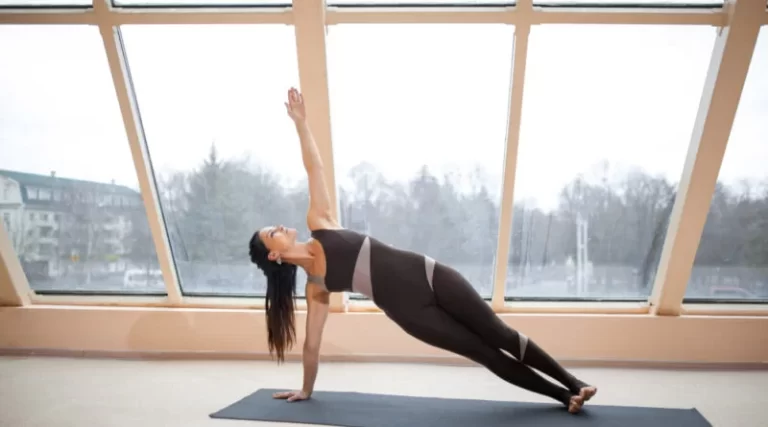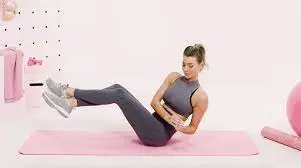Gomukhasana (Cow Face Pose)
What is Gomukhasana (Cow Face Pose)?
Gomukhasana (Cow Face Position) the name comes from Sanskrit words that convert as Cow Face Position in English. Gomukhasana words Go means Cow and, Mukha means face, Asana means Position or Posture. During this posture, our crossed legs be like the face of a cow. The knees be like the mouth, the shin be like the side of a cow’s face, and the feet be like the ears of a cow.
The yoga position gets its name because the thighs and calves of the student achieving it favor a cow’s face, broad at one end and narrowing towards the other. This position can be achieved by sitting position. Hence, it can be simply exercised by the learner. This position mainly comprises stretch and fold that requires flexible legs to mass the knees directly on the crown of each other, and shoulders, to grip the hands beyond the back with the support of balancing hips.
Cow Face Position (Gomukhasana) is a magnificent heart-opening and hip-opening yoga position. Arms, shoulders and the legs feel very moderated after executing the position. Any stress on these parts is separated thanks to the posture and movements. Hence, this position has also been named below restorative yoga positions. Considering the movements of the four limbs, and compulsion point on the join areas, the position has been comprised. Thus, when exercised daily for at least 5 minutes, this position relieves back pain, sciatica, rheumatism, and general stiffness in the shoulders and neck, and also reduce cramps in the legs caused due to long hours of sitting on the desk or long drives or a long walk or run.
Cow Face Position (Gomukhasana) has been comprised of yin yoga positions as the Shoelace Position stretches the deep and connective tissues between the muscles and the fascia all round the body. Yoga teachers can approve Sleeping Swan Position or Seated Butterfly Position and follow shoulder socket rotation ahead exercising the Cow Face Position to open the hips and shoulders for a long stay in the position with simple. Cow Face The position helps boost energy in the body and therefore can be comprised of flow yoga series.
Gomukhasana has included a base position as gomukhasana variations can be acquired from this position. Gomukhasana assists boost energy in the body and therefore can be comprehended in flow yoga sequences. The Gomukhasana benefits us by upgrading our posture. It stretches arms, shoulders, chest, armpits, and hips and allows a broad range of shoulder movements. It upgrades flexibility and stimulates our body’s chakras (svadisthana/spleen, sacral chakra, and the Anahata/heart chakra). Sitting in the position for a few minutes and reducing the breaths relieves stress and anxiety.
What are the Health Benefits of Gomukhasana (Cow Face Pose)?
This position conducts in itself a whole lot of benefits as many parts of the muscles work together to give looker and power to the position. Given are some benefits under but for which a lot of exercises is needed.
Stretches, Strengthens, Lengthens:
The cow Face Position is one of the best shoulder-opening positions that further enlarges the chest when stretched and folded at the back. This position stretches the hips, ankles, shoulders, and arms and make the joints and muscle around them strong. Strengthens the muscles of the back, ankles, hips, shoulders, thighs, inner armpits, triceps, and chest. Being, the legs at the thighs connected, the muscles at the quadriceps get flexible and the stretch is felt deep at the hips as these joints are put to work to get the thighs connected well. The shoulders and the chest enlarge during the position, making the upper back strong and erect. Similarly, the position may help students construct the legs and abdominal muscles for Garudasana, Vrikshasana, or Firelog Position. It signifies how different the two sides of most people’s bodies are; often it is much calm to conduct your hands to meet beyond your back on one side than the other.
Flexibility and Range of Motion:
The stretch at the hamstrings helps in obtaining elasticity and this can be beneficial to athletes in the long run with regular exercise. The arms get strong too as mentioned quick at the biceps and triceps muscles and conduct about some elasticity to the shoulder and the upper arms. This asana helps to flex the back, making it more flexible. Gomukhasana assists in stretching the full-body parts like- shoulders, arms, chest, trapezius, glutes, hamstrings and quadriceps. Greater portability means better flexibility.
Treatment of Sciatica:
Sciatica occurs when the herniated material from a ruptured spinal disc press upon the delicate nerve root transpiring from the spinal cord, this causes radiating pain in the thigh, lower back, and calves. Exercising gomukhasana continuously can help in healing sciatica pain.
Stimulates Kidney:
Stimulates kidneys. This yogic position has shown positive results on kidney simulation which lead to kidney’s stronger functioning and its found to be helpful for diabetes patients. It increases the working of the kidneys, thereby helping those accepting diabetes.
Sure Stiff Shoulders:
Those who have rigid shoulders should exercise this yogic position. It helps in releasing the stiffness from the shoulders and making it more elastic. It helps to heal rigid shoulders and also helps in releasing the cervical spine. Preserves rigid and frozen shoulders.
Chest, Diaphragm, and Breath:
Gomukhasana is both a heart and a hip opener, so both will help in conducting balance in the body and conduct the maximum benefit to the spine keeping it fit whereas thanks to the maximum evolution of the chest, the functioning of the lungs also is improved. Works on creating the pericardium area more available.
Activates the Chakras:
As this magnificent yogic posture offers a deep hip abductor stretch which results in more modified hip muscles. It also works on beginning the hips and producing the pericardium area more available. This position also upgrades the flow of blood flow which release the firmness from the lower body and reducing stress. Therefore it permits the flow of Prana from the unblocked chakras and activates the Muladhara, Svadhisthana, and Anahata chakras.
Awareness and Focus:
Cow Face Position essentials the internal rotation of hips where students need to floor their sit bones to certain the weight of the body is evenly dispensed. The pelvis is active, the core is attached, and the shoulders function differently to open the chest, but the spine stays long, stretched, and almost neutral. When these things are retained in the mind consciously, the holding of the position becomes far quiet. Hence, the focus is primarily at the hips (beaching the sit bones) and keeping the pelvis active. With this kind of awareness, students can then simple progress to Cow Face Position Variation Foot, Cow Face Position Variation Forward Twist, or Cow Face Position Variation Side Stretch, which are all great on the hips.
Alignment and Posture:
Cow Face Position increases blood supply to the legs and arms, creating it a useful position to prevent long periods of sitting in a chair or starting hunched over a desk. Hence, to get the best from this exercise, students should be repeatedly attended to have the shoulders collected above the hips, the feet closely disposed to the hips, the hips disposed to each other, and the elbows and forearms unequally active to open the chest. Together when these are kept in mind, the overall posture of the torso is upgraded which influences breathing, better blood flow, and better prana flow (both upwards and downwards), and upgrades the nervous system by sending signals to the brain. Gomukhasana restoratives your spine, shoulders, and chest muscle to upgrade your body’s natural posture.
Energizing, De-stressing, Relaxing:
The total spine is stretched conducting a good flow of prana from the base of the spine to the top of the head, and the overthrow from the top to the base of the spine right after delivering from the position. Accepting more energy to flow through the body can increase the ability to skillfully deal with stress, increasing the overall well-being and lifting the vibrations, so that the body and mind can modify. Stimulation and Organs: The lifting of the full body upwards to get the arms or fingers interlocked beyond works with the evolution of the lower abdominals muscles thus producing the abdominal organs function well.
Therapeutic, Healing, and Ailments:
The flexion of the knee joint can be useful to heal making certain kinds of weakness in the knee provided it is not a ligament tear. This works in opening the limb at the knee while in the position pushing the knee towards the floor is worked at. In the several variations of Gomukhasana, the abdominal muscles are put to work upgrading digestion or any kind of disorders obtaining to the organs at the abdomen.
Relieves Stress And Anxiety:
Yoga is always achieved for its two benefits: physical and mental. The rhythmic breathing pattern observed in most yoga exercise supplies many mental benefits. Exercising this asana continuously can decrease stress and anxiety is a part of it.
Cures Sexual Ailments:
Increases sexual performance. Gomukhasana helps in healing sexual disorders across improves blood flow, relieving stiffness from the lower body and replacing stress.
Good For People Having Hydrocele:
Hydrocele is a condition when testicles are charged with fluid and can be observed through swelling in the scrotum. This yoga is beneficial for the people accepting of a hydrocele.
Full Body Toning:
Gomukhasana extends your hips, thighs, chest, shoulders, anterior deltoids, triceps, and lats. So essentially gomukhasana is helping you with toning major muscle parts of the body. Reproductive organs are toned and massaged with regular exercise.
Hip Opener:
This classic yogic posture issues efficient deep abductor stretch which results in confronting more moderated hip muscles.
Others:
Enlarged diaphragm and upgraded breathing in Gomukhasana upgrades the blood circulation at the chest and is accepted to keep away all kinds of allergies in the blood are clarified in the existence of sufficient oxygen in it. This position works more as regards the human anatomy, thus keeping the full body stretched well and allowed room for proper flow of prana and blood to the full body. Deep unbend at the abdominal area also burns the nonessential fat at the tummy area and tones the full torso. Gomukhasana with eagle arms, Parivatta Gomukhasana bended, Shoelace position, Supta Gomukhasana (Reclined cow face), Vajra Gomukhasana, Mahavira Gomukhasana, Hasta Gomukhasana, Baddha Gomukhasana. Helps high blood pressure. This position may help you accurate your posture and start to equalize your flexibility. It is a great position for those who sit most of the day at work as it will open your hips and chest, preventing the decrease many people acquire while sitting. It is a mollify and pointing position.
Preparatory Position:
After successfully exercising the Cow Face Position, one should go for various Cow Face Position Variations. After those, people may also go for Cow Face Position Eagle Arms Forward Twist, Cow Face Position Variation III, or Cow Face Position with Eagle Arms to further open the hips and the arms.
What are the Preparatory poses for Gomukhasana (Cow Face Pose)?
- Baddha Konasana (Bound Angle Position)
- Garudasana (Eagle Position)
- Supta Baddha Konasana (Reclining Bound Angle Position)
- Supta Virasana
- Supta Padangusthasana
- Upavistha Konasana
- Virasana
- Sun Salutation (Surya Namaskar)
- Baddha Konasana (Bound Angle Position)
- Dhanurasana (Bow Position)
How to Perform Gomukhasana (Cow Face Pose)?
Sit on the ground legs extended and spine straight.
Area the palms on the ground and conduct the left leg twist at the knee and place the left foot under the right buttocks by lifting the body a bit. Sit on the left foot gaining the ankle and the toes deep inside.
Lift the right leg twisting at the knee and place the right thigh over the left thigh by conducting the right foot close to the left buttocks on the ground.
Make certain both knees are one above the other or if possible interlocked deeper trying to balance the body effectively.
Conduct your left arm and stretch it above your shoulder and head. Twisting it take the left palm and place it beyond you close to the shoulder blade.
Now lift the right arm and from undertaking it beyond you twisting at the elbow and place the right palm beyond you trying to reach for the left palm.
Then once agreeable grip the left palm and detain on together feeling the stretch at the shoulders and the elbows.
Once the grip is acquired, pull the palms closer and conduct the chest out lifting the upper body upwards and making sure the neck does not twist forward and remainders in line with the shoulders and chest.
Feel the stretch at the shoulder, elbow, neck, arms, thighs, knee, chest, and abdomen.
Endure here for a few breaths and slowly deliver from the position. Modify by stretching the legs out in anterior of you and conducting the arms down excepts you.
After taking a few breaths in the modified position, conduct the right leg twist at the knee and place the right foot close to the left buttocks, and cross the left thigh over the right thigh and conduct the left foot close to the right buttocks on the ground.
Lift the right arm and conduct the right palm from up and beyond your head and place it close to the shoulder blade beyond you.
Stretch the left arm and take it down and place the left palm close to the shoulder blade beyond you and try to grip the right palm.
Interlock the fingers and attract the chest out and the shoulder blades closer enlarging the spine upwards.
Endure in this position for a few breaths and then deliver the arms and stretch the leg out in anterior of you and modify.
Modify the body entirely and go back into the position again to get a better understanding of the position and the posture.
To come out of the position, deliver the arms, unfold the legs and repeat on the other side. Recollect switching legs as well as the arms. Whichever knee is collected on top, the opposite side elbow is directed upwards.
How to Perform Gomukhasana by Watching a Video?
What are Follow up poses for Gomukhasana (Cow Face Pose)?
To conduct the feet to modify after the exercise of Gomukhasana (Cow Face Position), stretch the legs out anterior of you and deliver the stiffness at the lower back, hips, shoulders, and legs with the exercise of Paschimottanasana (Seated Forward Bend Position). This yoga position with the ahead the stretch of the full upper body will conduct the muscles to moderate completely.
There are several variations one can exercise in Gomukhasana. Seated in Gomukhasana (Cow Face Position), one can go ahead with the upper body trying to reach for the ground with the face (see Cow Face Position) Eagle Arms Forward Twist, or take side bends seated in Gomukhasana (Cow Face Position Variation Side Twist), or go into Eagle Position with the arms seated in Gomukhasana (Cow Face Position with Eagle Arms). These variations will help to further open the arms and the hips.
- Purvottanasana (Upward Plank Position)
- Paschimottanasana (Seated Forward Bend)
- Dandasana (Staff Pose)
- Ardha Matsyendrasana
- Bharadvajasana
- Garudasana
- Marichyasana III
- Padmasana
- Paschimottanasana
- Upavistha Konasana
What are the Beginners tips in Gomukhasana (Cow Face Pose)?
Beginners normally find it hard to get their sitting bones to rest evenly on the ground. This makes collecting the knees evenly over each other completely difficult. The spine cannot expand itself correctly when the pelvis is tilted. So use a blanket or bolster to support and raise the sitting bones.
Like any other yoga position, exercising Gomukhasana is also essential for several things that need to be kept in mind. Here are some tips for exercising Gomukhasana steps safely so that you obtain the maximum benefits:
- The starter may find Gomukhasanas a little difficult in the starting especially resting their bones evenly on the ground. This in turn makes the collecting of legs difficult. You can use a blanket to support and raise your bones. Gomukhasana is best exercised in the early morning hours. This is when you are mentally fresh and have an empty bowel and stomach.
- Not ever start doing Gomukhasanas without studying the steps through a skilled trainer and getting proper Gomukhasana information to avoid injuries. You can get this instruction at yoga classes near me or on health apps.
- People who have rigid shoulders or are overweight should avoid gripping their hands beyond their back instantly on starting Gomukhasana.
- You should avoid pulling the body behind what you can remain while doing the cow face position. This might result in spinal or back injuries.
- If during the cow face position your hands don’t grip, you may use a strap beyond your back to hold your hands together.
- Never attack between the Gomukhasana steps. Exercise slowly and in a relaxed manner to obtain the maximum benefits.
- Always do a warm-up session ahead of exercising Gomukhasana and a cool-down session after it to circumvent fatigue and injuries.
- Breath work is especially analytical while exercising Gomukhasana. Remain that you are aware of your breath to get all the benefits.
- Never exercise Gomukhasana if you have fever, cold, or flu.
- Don’t exercise this asana if you are distressed or apprehensive to circumvent your body getting overheated and drained.
- Women should not exercise this asana during menstruation.
- Don’t exercise Gomukhasana in a restricted space. space, where you exercise this asana, should be clean and free of disarranging. It should also be well-ventilated and free of noise.
What is the Breath Awareness in Gomukhasana (Cow Face Pose)?
In Gomukhasana, inspire and cross the legs taking the feet deep into the position and expiring enlarging the spine. Inspire again and conduct the arms beyond you and expire taking the other arm from under holding on to the palms. With every exhalation stretch deeper into the position and unstick the body with inspiration.
What is the Variation of Gomukhasana (Cow Face Pose)?
There are a few variations or modifications in the gomukhasana system which you can try to repetition maximum benefits:
- The arms can be placed in from anterior of you, on the ground, or on the knees to support yourself as you round ahead, or the hands can be placed beyond the back in alter prayer position.
- Keep your knees removed if they are rigid and you cannot mass them on each other.
- If you have tight hips it can be used to balance in the position. You can use a blanket for proper promotion to the side that is off the floor.
- If it is too great in your legs, you can also exercise this with one leg straight out in the anterior, and the other bent over top with your heel about your opposite hip.
- For a moderned level of Gomukhasana position, you can fold about and conduct your chest down to your thighs. It will extremely stretch your hips, triceps and shoulders.
- You can be increasing the stretch in this position by twisting forward. Therefore, keep the weight on your sitting bones and not on your knees. Come out as you inspire. Sit on a block to permit more space for your legs to move into the position and to help conduct your low back into a neutral adjustment.
- Use a strap to expire your reach if you cannot easily grip your hands.
Below are some common variations of the yoga position Gomukhasana with the base position as Cow Face Position (Gomukhasana):
- Cow Face Position
- Shoelace Position
- Cow Face Position Arms Close Up
- Half Cow Face Position Variation Forward Bend
- Cow Face Position with Eagle Arms
- Half Cow Face Position Variation
- Shoelace Position Variation Forward Bend
- Revolved Shoelace Position
- Cow Face Position Variation Side Stretch
- Cow Face Position Straps
- Cow Face Position Eagle Arms Forward Bend
What are the Types of Gomukhasana (Cow Face Pose)?
- Baddha Hasta Gomukhasana (Tied Cow Face Position)
Baddha Hasta Gomukhasana (Tied Cow Face Position)
What is Baddha Hasta Gomukhasana?
Baddha Hasta Gomukhasana (Tied Cow Face Position) the name comes from a Sanskrit name that convert as Tired Cow Face Position in English. Baddha Hasta Gomukhasana’s words Baddha means Tied and, Hasta means Arm, Go means Cow, Mukh means Face.
What are the Health Benefits of Baddha Hasta Gomukhasana?
- This asana inspires relaxation and alleviates tiredness, tension, and anxiety.
- It is restorative to the kidneys.
- Good for diabetes, backache, sciatica, and rheumatism.
- Reduces general stiffness in the spinal cord, waist, shoulders, and neck extends latissimus dorsi fully.
- Reduces and prevents cramps in the legs and the leg muscles become graceful.
- The chest is opened and the leg muscles become soft.
- Good posture for the respiratory system as the chest is opened.
- Good position for reducing cramps, laziness, fatigue, mental stress, diabetes, back pain, sciatica, arthritis, and shoulder and neck firmness.
- As arms form the symbol of infinity it is a great posture for higher meditation.
- Improves posture.
Benefits for Women:
- Effect reproductive organs
- Stronger the pelvic region
- Helpful during pregnancy to maintain the pelvic region
What are the Preparatory poses for Baddha Hasta Gomukhasana:
- Gomukhasana
- Arm and shoulder movements
- Leg Movement 2
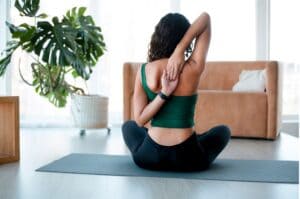
How to Perform Baddha Hasta Gomukhasana?
Taking the asana position: In the sitting position twist the left leg and place the left foot on the floor over the right knee. Twist the right leg and bend it so that it is modified on the floor with the right heel near the left buttock. Regulate the right knee so that it rests on the left knee. Stretch the right arm above the head, fold it, and place the palm on the back. Conduct the left arm beyond your back from the lower side. Try to extend the fingers to grip both hands together.
The asana position: Keep the neck, head, and spine direct. Force the back side of the head as opposed to the inside of the lifted arm. Close your eyes, modify and breathe normally.
Releasing the asana position: Inspire and while exhaling deliver your hands to your sides. Adjust the bottom leg anterior of you. Adjust the other leg returning to a sitting position. Exercise on the other side.
What are Follow up poses for Baddha Hasta Gomukhasana:
- Padmasan asanas
- Bhunamanasan
What is the Breath Awareness in Baddha Hasta Gomukhasana:
On pelvic around, hips, chest, and upper back.
What are the Variations and Tips in Baddha Hasta Gomukhasana:
If one cannot extend the hands beyond the back one can use a strap or grip onto the clothes.
What are the Precautions and Contraindications for the Baddha Hasta Gomukhasana:
Circumvent if there is a pain in the knees, shoulders, or arms.
What are the Do and Don’ts in Baddha Hasta Gomukhasana:
Do’s:
- Try to wind the legs around each other so that one knee is on the crown of the other
- Keep the spine upright
- Extend for the hands beyond the back
Don’ts:
- Curve over or fold the head down
- Overstrain
Therapeutic applications of Baddha Hasta Gomukhasana:
- Upper back pain
- Asthma
- Anxiety
- Stress
- Diabetes
- General backache
What are the Modifications in Gomukhasana (Cow Face Pose)?
Let’s make this position a little simple and easy in different ways or by improving it. Some are as explained.
- Utilization of a good blanket under the buttocks will conduct less stress on the hips and the lower back.
- Utilize a block placed under and seated on it will help in conducting the knees close to the ground thus according to a room for the overlapping of the thighs simple.
- If the elbows are not strong and elastic sufficient to take the palms beyond to interlock, then utilize a yoga flexible band/strap joining your hands can do the trick.
- Exercising Cow Face Position essentials adjustment as the balance joining both sides of the body is required. Functioning on the enervated side of the body is important to conduct the balance between both sides and Gomukhasana is one asana that can help to upgrade this balance.
- The head should not fall while trying to hold the palms at once beyond you. Remain the chin is up and in adjustment with the chest and the collar bone.
- One can work leisurely with one leg at a time-bending it and not interlocking it at the thighs. Start the exercise with just one leg bent and one elbow bent and after replicated exercise go with the full position.
What are the Precautions and Contraindications for the Gomukhasana (Cow Face Pose)?
Gomukhasana Precautions:
- There are some points of care that you must keep in mind ahead of your exercise this asana.
- Avoid this position if you have a shoulder, neck, or knee injury. Be mainly aware of how this position feels on your knees and prop yourself properly, or bound it if you can not find a position that does not cause you knee pain.
- People with rotator cuff injuries and knee pains must abstain from exercising this asana or look for acceptable modifications. If you have backache, it is best to consult a doctor ahead of you do this asana and exercise only under the supervision of a verified yoga instructor.
- If you have tight shoulders and fail to grip your fingers beyond your back, use a strap between your hands. Start the position with a strap adorned over the shoulder of the lower arm. Slide the lower arm to the back (you must remain that you slide your arm as much to the top of the back as possible), then capture the free end of the strap with the upper arm.
- In the case of other reductions, achieving this exercise might be difficult. But do not fret. Rather, start small. You can start by trying to take your hands backward, holding elbow to elbow (you do not have to grip the fingers) and stretching your legs, and crossing one over the other. With time and exercise, you will be able to perform the position excellently as it makes your body elastic and easy to stretch.
- It is great to exercise it in the morning. Make certain there’s a 10 to 12 hours gap between your last night’s meal and yogasana exercise.
- Do not extend your body.
- Stay behind in the position for only as long as you are restful.
- The exercise below is the advice of a specialist first.
- If you occurrence pain in the shoulder, neck, or back, consult a doctor ahead of doing any asana.
Gomukhasana Contraindications:
Specific situations may not help to exercise Cow Face Position, which is explained below.
Injury and Surgery:
Persons who got an injury at the knees, hips, hamstrings, quadriceps, neck, or shoulders or any surgery to the internal organs should abstain from this exercise. Significant neck injury. Hip replacement surgery.
Physical Strength and Weak Body:
The outer upper thighs are normally the most difficult area of the lower body to open while seated. So, the persons with tight hips and lower back pain can exercise Revolved Cow Face Position while seated on a pillow or blanket for supporting hips. Persons with very rigid shoulders may have to take it slow and simple. While this position helps with the opening of the sciatica nerve, it can also be contraindicated if persons complain of severe pain and stiffness of the sciatic nerve. Therefore, the students agonizing from sciatica for many months or years can try Cow Face Position below the advice of a sufficient teacher.
Shoulder pain or injury:
If you are encountering immoderate shoulder pain, abstain from doing Gomukhasana. If the pain in the shoulder is not much, do the posture below the supervision of an instructed yoga teacher. Frozen shoulder.
Pain in any of the key body parts:
It is suitable not to do the asana when any of the body parts which are stretched while doing the posture are in heavy pain. Severe sciatica pain. Severe pain in thighs, hip, knee, shoulder, hands, and legs.
Soft tissue injury in the leg:
Soft tissue injury means the injury of muscles, ligaments, and tendons of the legs. It normally appears from a strain or sprains in the legs.
Others:
The exercise of Cow Face Position behaves on the deeper tissues and ligaments of the upper thighs and also opens and stimulates the various extremity in the body. Apart from this, the pelvic floor muscles are strained and the supply of blood to the pelvis is also controlled in this position, therefore, pregnant women should avoid this exercise. Senior citizens should take care when in exercise with Cow Face Position if they have to struggle with the hips and thighs. The same it may be done while seated on a chair for stretching the side upper thighs. Muscle tear or pain in thighs. Bleeding piles, Spondylitis, Varicose veins.
Doing Gomukhasana in the above-mentioned conditions can exasperate the condition, but it can aggravate the problem. So, it is dominant to avoid doing the posture in these conditions.
What are the Common Mistakes in Gomukhasana (Cow Face Pose)?
- Be certain to keep your spine disposed of more quiet than perverted.
- You should have a straight line from the crown of your head to your tailbone.
- Avoid avoiding joining your hands.
- While your hands are grasped, do not stick your ribs out.
- Try to drop your tailbone to the ground and broaden your lower back instead.
- Also, endure rounding your back and curving your chest inward.
- Outspread your collarbones instead.

